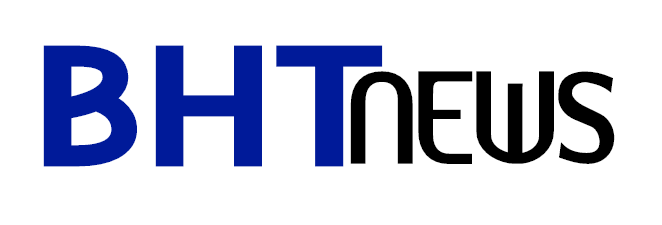Best packaging is the one that perfectly fulfills the branding and marketing goals of the brand by simultaneously offering protection to the product. Therefore, designing and choosing the suitable packaging for your product can be challenging and require attention to detail. Packaging is one of the factors which can either make or break your brand by attracting or repulsing your consumers.
The right packaging box not only attracts your consumers but will also keep your product safe during transportation and maintain its quality by keeping it fresh (especially if it is makeup or a food product). This fortifies the brand’s image in consumers’ minds. When they come across your product, they know they can count on it for quality. This can also mean that the wrong packaging box can be detrimental to your brand’s reputation.
Packaging design with high aesthetics and flawless branding are critical elements for your custom printed apparel boxes. Of course, functionality is also equally necessary. This article will help you choose the right packaging in terms of budget, size, design, and appeal, which will make your product stand out from the crowd.
The Legacy Printing has outlined a list of important considerations to help you in successfully planning your package design: The factors to consider are:
These are essential things to consider for producing the best custom printed apparel boxes for your product.
Table of Contents
1. Budget
Before you start your packaging box’s design endeavor, you must consider your budget. This will help you select pocket-friendly materials and lead you to have favorable or no variances on your cost variance analysis.
Packaging materials such as glass or plastics are appealing to consumers. However, they are expensive to manufacture and ship and are not sustainable. Glass is heavy and breakable, raising significant cost issues since it requires special considerations while being shipped or stored.
There are many budget-friendly options, too. The packaging company believes that rigid cardboard, compared with other packaging materials, is cheaper material with reasonable crush protection and countless design options.
Plastic is not eco-friendly and, therefore, is out of the question. The packaging can motivate the consumer to buy your product.
To choose the right option, you need to decide how much you want to spend on design innovation, creativity, and production.
2. Transportation
Once you have finalized the package design, consider functionality. No matter how unique the packaging design is, if the boxes do not function properly, all your efforts will go in vain.
According to The Legacy Printing, a unique packaging box is the one that tells consumers it was made for them. However, if it cannot be shipped or transited from your facility to the store shelf without being damaged is a worthless packaging box.
It is always important to ensure that your chosen packaging material is strong enough to protect the encased product, especially if your product is fragile or has an unusual shape.
If your product has a long shelf life, then it is necessary for you to consider additional factors regarding packaging. The packaging company suggests you go for a glossy finish, high-quality printing using the best inks, UV-treated high-gloss, etc. You can choose various finish techniques according to your design.
To ensure long-term cost-effectiveness, it will be wise for you to choose a good protective packaging design than to handle consumer inconveniences and complaints by replacing damaged goods.
You should set up a middle ground sweet spot where the cost of a damaged item equals the cost of strong packaging. By doing so, you will end up in your decided budget and have happy and satisfied customers.
3. Sustainability
When it comes to choosing the packaging materials, the rule of thumb is to treat your products and items exactly you would treat yourself. You will always prefer living in a comfortable house, i.e., not too big or too small. Similarly, the suitable space for the product dramatically affects the result.
The packaging boxes must not be too big so that the product keeps wobbling around in the box, and not too small that the product ends up broken due to the tight space.
Rigid boxes are lightweight, known for their strength, sustainability and are perfect for various printing techniques. The cost from a shipping and freight standpoint is favorable for brands. Additionally, these boxes also help your brand promote sustainability since they are reusable.
Rigid boxes are best used for makeup items, surgical and small medical instruments, hardware items, and retail products. These customized boxes are perfect for shielding your product from climatic and other external product damaging factors. These factors ultimately extend the product’s shelf life and act as attractive packaging to stimulate instant sales.
Cardboard options are ideal for products and items that need to be seen to stimulate a purchase. They are best for hang-tab boxes displayed at POS, e.g., die-cut window boxes.
Die-Cut Window Boxes
These are often seen in retail store shelves and at-counter displays. These boxes are used for packaging consumer goods, perishables, and pharmaceuticals.
Consumers expect their e-Commerce packaging boxes to be simple and convenient to use. Excellent packaging options are available to protect your product during shipping with simple opening and closing mechanisms.
4. Size
Make sure to design the boxes that are not too tight or too loose for the product. By using innovation and creativity and implementing cost-saving strategies, you can ensure that you are delivering the product in its promised condition.
5. Design and Branding
While it is important to consider budget, transportation, materials, and package design and incorporate each of these elements into your overall package design, let’s not forget to keep your audience at the forefront. Keeping your target market at the forefront along the way will help you meet overall success with the package design.
The type of packaging material you choose to use in your packaging design is a part of your brand, so any disconnection between packaging material, design, and brand’s message will confuse your customers and make them lose trust.
It is best to research and understand them enough before making these critical branding, marketing, and packaging decisions to appeal to your consumers.
Market research is the best way to learn your target audience’s values and decide how to pair those details with your sustainably needs and goals, budget, and transportation. Always consider your target audience’s demographics and cater to their needs accordingly.
Endless Possibilities
There are countless packaging materials to choose from. The limitations come with the budget, sustainability, and perhaps your ideas, brand theme, and imagination. Ensure that you review all aspects of these material options and develop a workable plan with your rigid boxes manufacturer that keeps your target audience’s demographic as its center.
Also, make sure that your brand’s message is conveyed to your audience with the packaging displayed on the shelf. You will be fully prepared to create a beautiful, sustainable, eye-catching, appealing, and high-quality packaging box by considering all of the above dynamics.
This will ensure that the entire process is seamless and productive for your brand, and you will be sending out only the best-looking products for your brand.





















